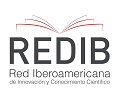DESARROLLO DE MODELO MURINO DE COLONIZACIÓN DE Lactobacillus plantarum LP5 DE ORIGEN PORCINO
DOI:
https://doi.org/10.14409/favecv.v19isuplemento.10938Palabras clave:
Modelo murino, Colonización, Lactobacillus plantarum, Bacteria ácido láctica.Resumen
The objective of this work was to generate an experimental model of colonization by L. plantarum LP5 in mice (Mus musculus) aimed at improving the general state of the animal and preventing the possible presence of zoonotic pathogens. The mice used were females of the Balb/cCmedc strain, 6 weeks old. Animals were organized into 2 groups of 3 individuals: treated (GT) and control (GC). GT was administered twice weekly by gavage with 100 µl of rifampicin resistant porcine L. plantarum LP5 at a concentration of 1010 CFU. Mice were fed water and food ad libitum throughout the experiment. Colonization in both groups was evaluated by the presence of clinical signs and by a microbiological analysis of the feces. Sampling was performed at weekly intervals to quantify the populations of the supplied L. plantarum LP5, Lactobacillus spp., Escherichia coli, total coliforms, Campylobacter and yeast. The results of the sampling in the GT in the week showed a recovery of L. plantarum LP5 above 5 logUFC/g, in the second it was 7 logUFC/g and in the third it was 5 logUFC/g. The CG, meanwhile, maintained the null count throughout the experiment. The results showed that there was no imbalance between the microbial components. Therefore, it is feasible to affirm that the inoculum did not alter the balance of the intestinal ecosystem. Particularly, it did not exert an inhibitory effect on the members of the previously established microbiota.
Descargas
Publicado
Cómo citar
Número
Sección
Licencia
FAVE Sección Ciencias Veterinarias ratifica el modelo Acceso Abierto en el que los contenidos de las publicaciones científicas se encuentran disponibles a texto completo libre y gratuito en Internet, sin embargos temporales, y cuyos costos de producción editorial no son transferidos a los autores. Esta política propone quebrar las barreras económicas que generan inequidades tanto en el acceso a la información, como en la publicación de resultados de investigaciones.
Los artículos de la revista son publicados en http://bibliotecavirtual.unl.edu.ar/publicaciones/index.php/FAVEveterinaria/issue/current/, en acceso abierto bajo licencia Creative CommonsAtribución-NoComercial-Compartir Igual 4.0 Internacional.











